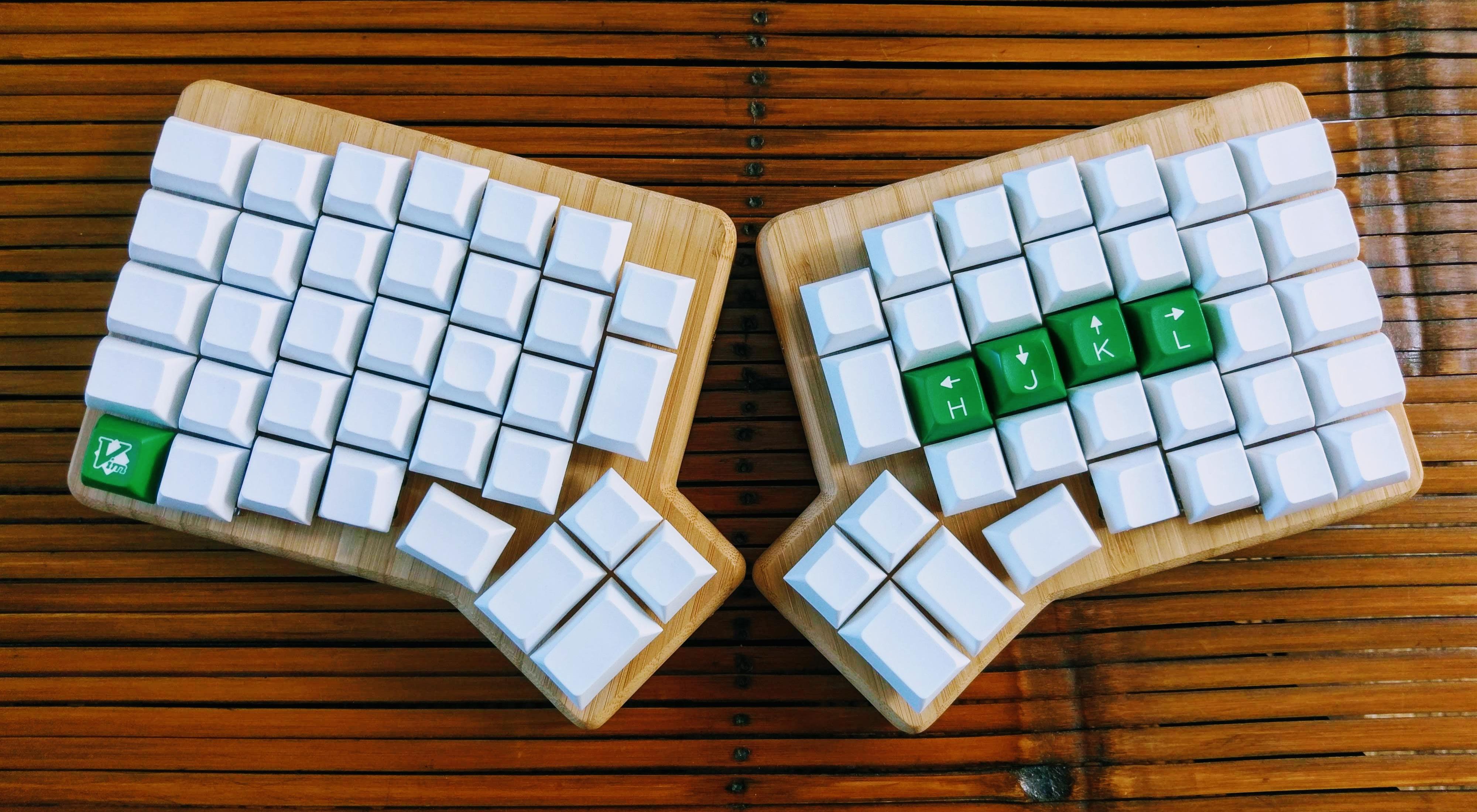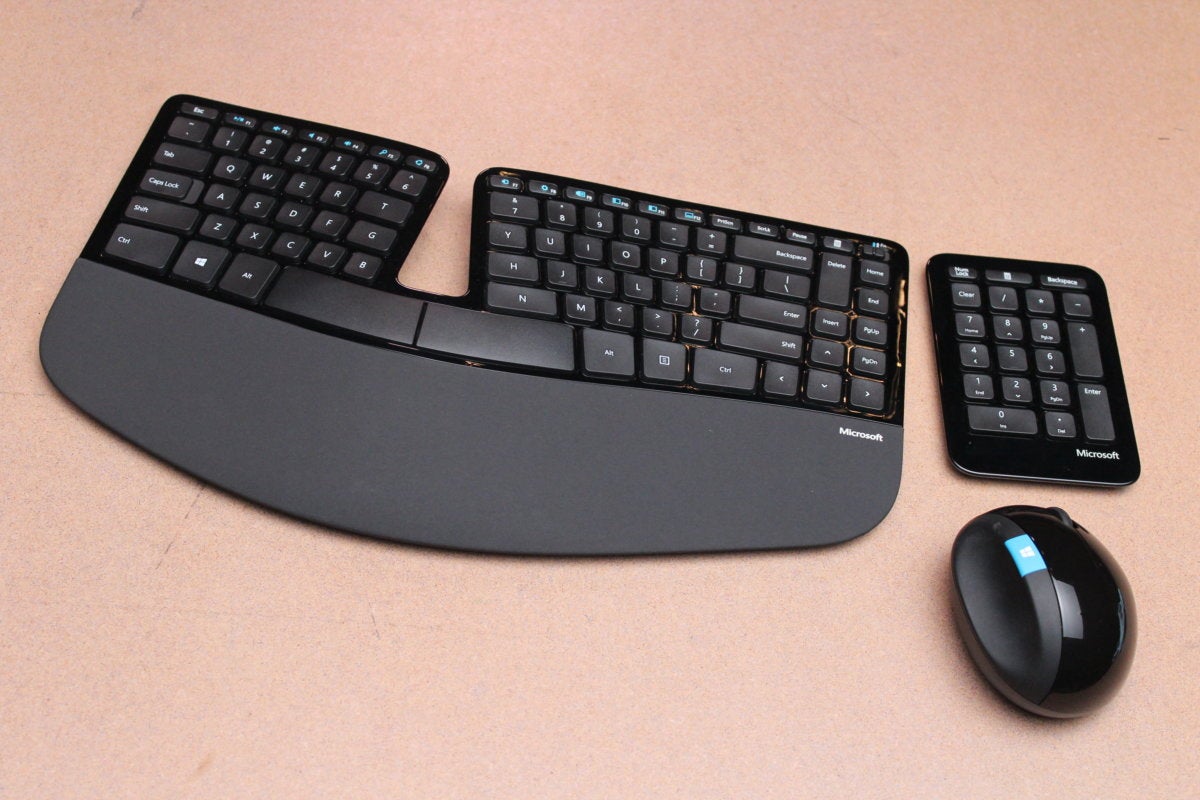A typing journey, part 1: My first Keyboard®
Introduction
Recently I’ve been getting some recurring pains in my back and arms. The forearms, wrists and thumbs particularly, most often noticeable on my left side. It gets bad enough sometimes that it can prevent me from typing, or certainly be painful enough to be distracting when I am trying to work.
It’s been almost a year since I started working from home, and I don’t think I’ve ever really evaluated the suitability of my workspace for prolonged use.
At my previous job, which was office based, it was mandatory to have regular Display Screen Equipment (DSE) assessments. This is a questionnaire that you can take, and a series of recommendations to follow to ensure your workstation is the most ergonomic it can be.
Not only have I not properly been through this process with my home office, but I have also noticed that I am sat in front of the computer a lot more now than I was when I was office based.
Working fully remotely means that all of my meetings and most of my conversations take place in front of the computer; and a significant number of them take place over text based mediums like Slack.
This all adds up to a situation that’s not great for my health: being hunched over a tiny cramped keyboard at a badly set up workstation for hours on end, sometimes without regular breaks (if I get distracted and forget).
I’m not in my 20’s anymore and I’m starting to creak, so fixing this had to become a priority. I identified three key areas to change:
- My desk & chair setup (I already have invested in a good chair, so verifying the setup, and the desk was important to do first).
- My working schedule and taking regular keyboard breaks
- My peripherals: keyboard, mouse etc
In the interests of brevity I’m not going to talk about what I did to address the first two areas, suffice to say that it made a lot of different to my overall comfort, particulary to my lower back.
What I want to talk about now are my attempts to solve the pain in my hands, wrists, and upper back by changing my keyboard.
The Problem
I identified a couple of problems with my posture that seemed to be almost directly related to the keyboard that I was using.
-
Ulnar deviation: Placing my keyboard in front of me at the distance required to keep my upper arms vertical and my elbows bent at 90° required a really pronounced angle on my wrists that was really really uncomfortable. Apparently I have long forearms which makes this even more pronounced.
-
Wrist Pronation: I was using a flat keyboard and so my hands were palm down almost all the time. I know it’s possible for people to type comfortably with wrist pronation, but for some reason - possibly the amount of time I spend typing in combination with the other issues, meant that this position was causing real pain in my elbows.
-
Upper back pain: Not entirely sure why this is happening, but reading a lot of ergonomics documentation leads me to believe that because of the length of my forearms, my hands (when they were at their typing position on the keyboard) required my arms to be at an obtuse angle - which was causing my shoulders to pull inwards, stretching out my upper back, instead of being straight and having a relaxed back. I don’t know if this is a proper reliable medical assessment, but it’s consistent with the pain that I have, and ways in which I can address it. So it seems like it will be worth experimenting with.
Thankfully I don’t really suffer from problems related to wrist extension that much, because I generally don’t wrest my wrist on the table when I type, preferring a position where my hand sort of floats above the keyboard, this allows me to keep my wrist straight in relation to the position of my hands.
Solution attempt #1
Solution 1 was to start researching ergonomic keyboards, disappear down a rabbit hole for over a month, get to a point where I’m researching soldering station and PCB fabrication methods - realise that this was silly and that my pain were getting worse by the day, and just order a Microsoft Sculpt Ergonomic desktop set.
I had one of these at a previous workplace, so I knew what I was getting. This is an excellent keyboard and I really like it. I’ve been using it for a few weeks now and it’s definitely made a difference. Even just the slight tilt on the board has been enough to alleviate most of the elbow pain I’ve been struggling with, and the split in the keyboard has reduced the angle at which my wrists need to bend considerably, but nowhere near enough to eliminate the ulnar deviation and the tendon pain associated with that.
Because the keyboard still has to be positioned in front of me, it’s also done nothing for the obtuse angle in my arms, which means my upper back is still just as painful as before after a long day at work.
I also found that this keyboard actually ended up making the pain in my thumbs worse. I put this down to the position of the modifier keys I used most often being in positions that required me to tuck my thumb almost fully underneath my hand. I think this is exacerbated compared to a regular board due to the tilt that my hands are at, and the oversized space bar.
So whilst it’s much better than a traditional straight board - It hasn’t entirely managed to make typing a completely comfortable experience for me.
And off I went back into the world of custom ergonomic keyboards, although at least this time I’m armed with another data point of things that do provide definite benefit, and a keyboard that isn’t pure hell to type on.
Solution Attempt #2
And so here we are, up to the current day. After much research, and soul searching I have ordered myself a keyboard.

It’s called the Redox keyboard, a fully open source, split ergonomic keyboard, with columnar stagger. It’s based around the ErgoDox keyboard but with the size slightly reduced and the thumb clusters redesigned to be more ergonomic.
Mine has different keycaps to the one in the picture - I’m not quite brave enough for blank caps, especially on a board with such a different layout to what I’m used to, so I’ve gone for some low contrast light coloured caps on the alphanumerics, with blank black modifiers.
It runs custom firmware called QMK, which means it’s 100% configurable and because all the schematics and design documentation is open source, if I need to modify it or fix it in any way then I can.
The Redox is available in a bunch of places, but I purchased mine pre-assembled from Falba.tech in Poland. The website is slightly janky, but the guy that runs it was one of the first people in Europe to provide custom CNC’d ErgoDox cases back in the day, and he’s got history with Geekhack and the other keyboard forums so he knows what he’s up to (I hope. My keyboard has not actually arrived yet).
The order process is really nice, you get to choose pretty much all aspects of what you want to order. I ordered the custom Bamboo case, with the tilt kit (a set of four legs that attach to the board, allowing a wide variety of tenting potential), with Cherry MX Brown switches (I contemplated going with the hot-swap kit, or something a bit different like Kailh Box switches, but my lack of confidence in the reliability of these options, and my familiarity with Cherry led me back to the tried and tested MX Browns).

Anyway. I’m excited to see how this goes. I’m planning to write more about the actual hardware and software when the keyboard arrives, so if this is interesting to you, there’s an RSS feed here and thanks for reading.
So why didn’t you buy a Kinesis Advantage?
There’s a bunch of keyboards I could have ordered. Ultimately my decision was swayed by a combination of features would best alleviate my issues, whether the hardware/software was open, whether I could order it from the EU for a reasonable price (avoiding VAT/customs from the USA or China for instance).
But I want to address the Advantage directly as it kept coming up when I was speaking with people for advice. I think the Kinesis advantage looks really interesting, and one feature that I really wish I had on my new keyboard was the scooped keywells. But when I was assessing what kind of problems I was having and what the best way to solve them would be, I realised that I don’t actually have any pain in my fingers per se. So I wasn’t convinced that having scooped keywells and an ortholinear layout would actually be as beneficial to me as the other features I was looking at (I’ve also seen a small amount of compelling reasoning that having keys arranged in a vertical columnar stagger as the ErgoDox/Redox do provides almost the same benefits as a scooped keywell anyway, although I haven’t been able to verify this with actual research).
The kinesis shares a couple of similarities with the Microsoft Sculpt that I’m currently using, that made me reluctant to buy one. Firstly it’s split layout is fixed, so I can’t place the sides in a different position to open out my chest and alleviate my upper back pain, and secondly the tenting position is fixed, which means I’m unable to change the angle of incline to try and make my elbows hurt less.
Also, the Advantage is very expensive - especially if you’re in the UK, at $349 direct from the USA, which including customs fees etc would work out to ~£350 which is £50 more than even the priciest custom keyboard I was looking at. I’m too lazy and impatient to wait on the availability and reliability crapshoot that is eBay.
Who knows, if I decide the staggar is actually a missing killer feature from my new board, then maybe my next board will be a Dactyl manuform - if I’m brave enough to hand-wire it!


